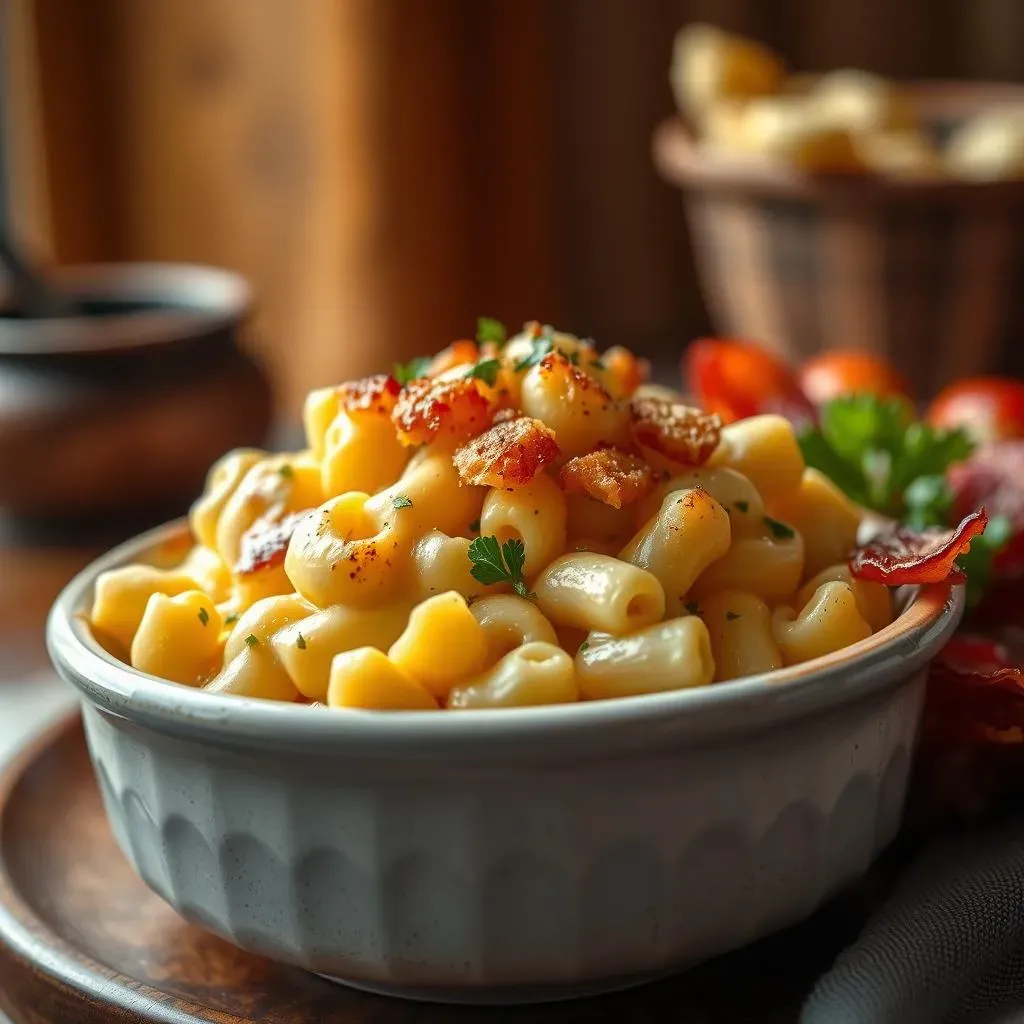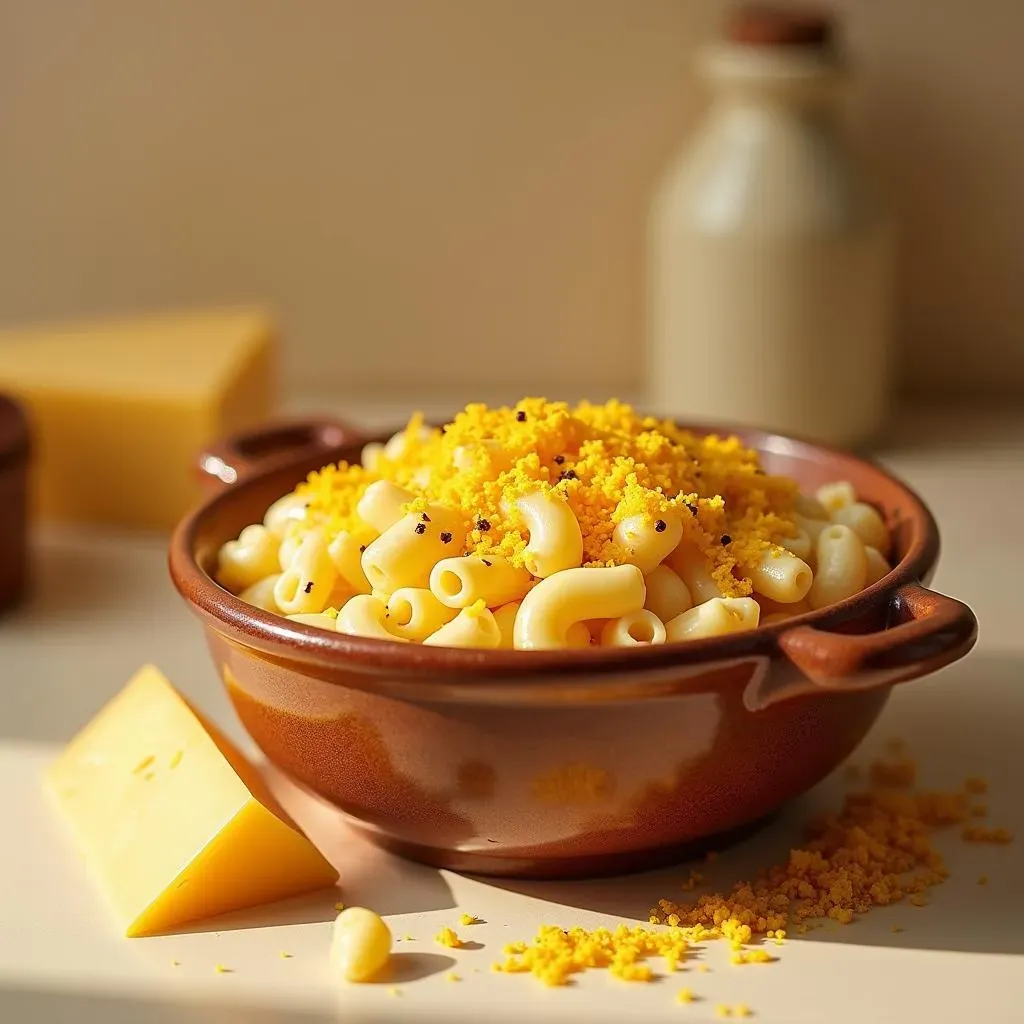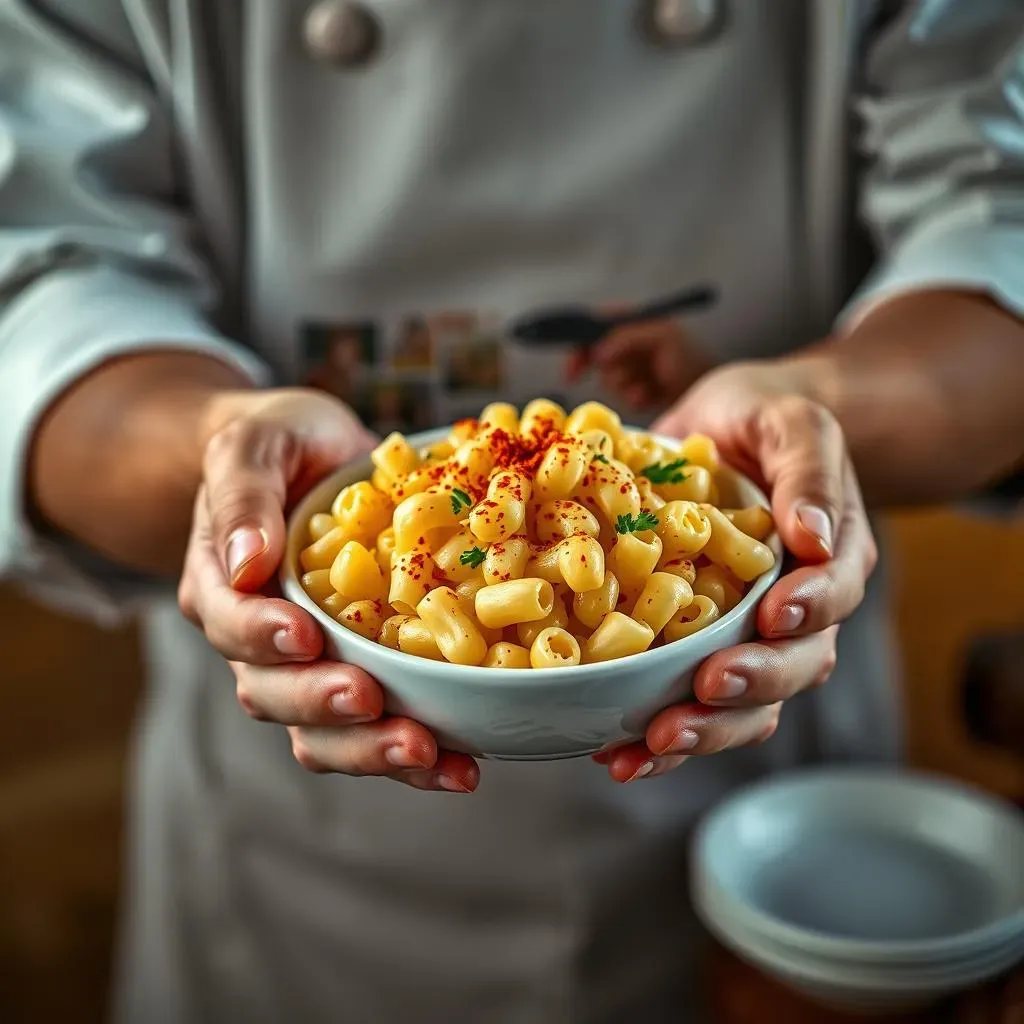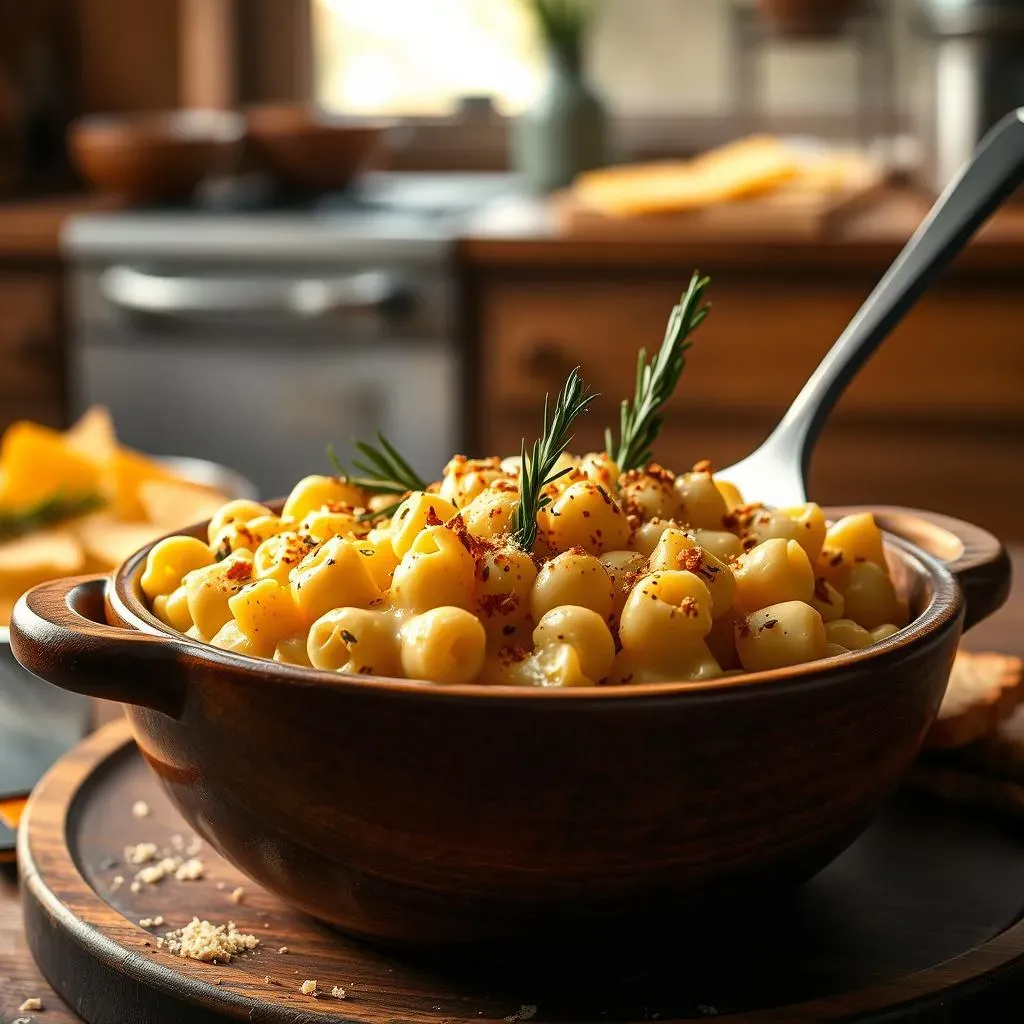Table of Contents
Let's be honest, classic mac and cheese is the ultimate comfort food. But the thought of making a roux? It can feel intimidating, right? That's why we're diving headfirst into the creamy, cheesy world of classic mac and cheese without a roux! This article is your guide to achieving perfectly smooth, decadent mac and cheese without the fuss of traditional methods. We'll explore why skipping the roux is a game-changer, revealing the secrets to a flawlessly creamy texture using the best cheeses. Get ready for a step-by-step guide that'll have you whipping up this iconic dish in no time, even if you're a kitchen newbie. And because we believe in customization, we'll also show you how to elevate your classic mac and cheese with exciting flavor variations and add-ins. So, ditch the roux and get ready to experience the ultimate comfort food, made easier and tastier than ever before. Prepare to master the art of making classic mac and cheese without a roux!
Why Skip the Roux? Unlocking Creamy Mac & Cheese Secrets

Why Skip the Roux? Unlocking Creamy Mac & Cheese Secrets
The Roux Struggle: Why It's Not Always Necessary
Let's be real, making a roux for mac and cheese can be a bit of a hassle. It requires precise timing and temperature control to avoid lumps or a gritty texture. One wrong move, and your perfectly good cheese sauce can turn into a clumpy mess. But what if I told you there's a simpler, smoother path to cheesy deliciousness? This no-roux method bypasses that whole stressful process, giving you more time to focus on the fun parts: cheese selection and delicious add-ins! For beginners, a classic mac and cheese recipe is a great starting point. Check out this recipe to get the basics down.
Think of it like this: the roux is a bridge you need to cross to get to the other side, but sometimes, there's a perfectly good tunnel right beside it. The no-roux method is that tunnel – a quicker, easier route to the same creamy destination. Plus, it opens up possibilities for even more flavorful variations, because you're not limited by the constraints of a perfectly cooked roux. For the best results, always use fresh, high-quality ingredients. Want to learn more about the essential ingredients? Here’s a helpful guide to help you pick the best ingredients.
Traditional Roux Method | No-Roux Method |
|---|---|
Requires precise cooking of butter and flour | No flour needed, simpler process |
Potential for lumps or a gritty texture | Smoother, creamier texture guaranteed |
More time-consuming | Faster and easier |
Unlocking Effortless Creaminess: The Science of Cheese Sauce
The magic behind creamy mac and cheese without a roux lies in the power of emulsifying fats and cheeses. Instead of relying on a flour-based roux to thicken the sauce, we leverage the natural fats in cheeses and milk (or cream) to create a luscious, velvety texture. It’s like a secret handshake between dairy and cheese, resulting in a perfect balance of richness and smoothness. The key is to gently melt the cheese into a warm, creamy base, ensuring that each cheese melts evenly and contributes its unique flavor and texture. You might want to try different cheeses to find your favorite. This recipe using cheddar cheese is a good example.
Think of it as a culinary alchemy: combining the right ingredients at the right temperature creates a harmonious blend that elevates the simple act of eating mac and cheese to an experience. The result is a sauce that’s not only rich and flavorful but also incredibly easy to achieve. You’ll be surprised how simple it is to get restaurant-quality results at home, without the hassle of a roux. There are tons of ways to elevate this dish! Adding bacon is a classic and delicious choice.
- Use high-quality cheese for the best flavor.
- Grate your own cheese – pre-shredded cheese often contains anti-caking agents that prevent proper melting.
- Stir the cheese slowly and gently into the warm cream or milk base.
Beyond the Basics: Exploring Different Cheese Combinations
One of the greatest advantages of ditching the roux is the freedom to experiment with different cheese combinations. The limitations of a roux often restrict the types of cheese you can use. But with the no-roux method, the possibilities are endless! Imagine the creamy richness of Gruyere, the sharp bite of cheddar, or the nutty depth of Parmesan – all mingling together in perfect harmony. And don't be afraid to get creative; try blending different cheeses to create unique flavor profiles. There are so many delicious options to try! This recipe using Gruyere is a perfect example of a sophisticated mac and cheese.
It's like being a cheese sommelier for your mac and cheese, carefully curating a blend to tantalize your taste buds. You can even add a touch of something unexpected, like a sprinkle of smoked paprika or a dash of your favorite hot sauce, for an extra kick. Remember, it’s your mac and cheese, so have fun with it! Smoked Gouda adds a unique smoky flavor.
The Best Cheese for Creamy, Dreamy Mac & Cheese

The Best Cheese for Creamy, Dreamy Mac & Cheese
Sharp Cheddar: The Classic Choice
Let's start with a classic: sharp cheddar. Its bold, tangy flavor is a cornerstone of many mac and cheese recipes, adding a delightful bite that cuts through the richness of the cream. The sharpness also helps to balance out the sweetness of the pasta, creating a harmonious flavor profile. Cheddar melts beautifully, contributing to that signature creamy texture we all crave. For a truly intense cheddar flavor, try grating your own cheese – you'll get a much more intense flavor than pre-shredded cheese. Want a simple recipe to start with? Check out our classic cheddar mac and cheese recipe.
Remember, the quality of your cheese directly impacts the overall taste of your mac and cheese. Choose a good quality, well-aged cheddar for the best results. Don’t be afraid to experiment with different cheddars – some have a sharper bite than others, and this can significantly impact the flavor profile of your dish. Looking for a more advanced recipe? This bacon cheddar mac and cheese is a real treat!
- Sharp cheddar provides a great balance of tang and creaminess.
- Use freshly grated cheese for the best flavor and melt.
- Experiment with different ages of cheddar for varying sharpness.
Gruyere: A Sophisticated Upgrade
For a more sophisticated twist, consider Gruyere. This Swiss cheese boasts a nutty, complex flavor that elevates mac and cheese to a whole new level. Its subtle sweetness complements the richness of the cream, creating a luxurious and elegant dish. Gruyere melts smoothly, resulting in a creamy sauce with a slightly more sophisticated taste than cheddar. It’s the perfect choice for impressing guests or treating yourself to a special occasion meal. If you want to try this cheese, check out our Gruyere mac and cheese recipe.
The slightly sweet and nutty notes of Gruyere create a wonderful contrast to the savory pasta. This cheese is particularly delightful when combined with other cheeses, such as a sharp cheddar or a creamy Fontina, creating a multi-layered flavor experience. For an even more luxurious dish, try adding a touch of truffle oil. This truffle oil mac and cheese recipe is a fantastic example.
Cheese | Flavor Profile | Melt |
|---|---|---|
Sharp Cheddar | Tangy, sharp | Excellent |
Gruyere | Nutty, complex, slightly sweet | Excellent |
Beyond the Basics: Blending for Maximum Flavor
But the real fun begins when you start blending cheeses! Experimenting with different combinations allows you to create your own signature mac and cheese, tailoring the flavor profile to your exact preferences. Try a blend of sharp cheddar and creamy Fontina for a balanced richness. Or, for a more adventurous palate, incorporate a bit of Pecorino Romano for a salty, pungent kick. This is where your creativity truly shines!
Think of it as a culinary palette – you can layer flavors, creating depth and complexity. A little bit of this, a little bit of that – the possibilities are endless! Don't be afraid to experiment, and most importantly, have fun with it. The best mac and cheese is the one you enjoy the most. Want to try a different cheese? This Fontina mac and cheese recipe is a great place to start.
Mastering the NoRoux Mac & Cheese Technique: A StepbyStep Guide

Mastering the NoRoux Mac & Cheese Technique: A StepbyStep Guide
Preparing the Pasta: The Foundation of Flavor
First things first: cook your pasta! Use elbow macaroni (classic!), or get creative with other fun shapes. Just make sure it's perfectly cooked – al dente is key. Overcooked pasta will become mushy in the sauce, while undercooked pasta will be unpleasant to eat. Aim for that perfect balance of firmness and tenderness. Once cooked, drain the pasta thoroughly; this prevents your sauce from becoming watery. For a super simple recipe, check out our guide on how to make classic mac and cheese.
While your pasta cooks, get your cheese sauce ready. This is where the magic happens! Using freshly grated cheese is crucial. Pre-shredded cheese often contains cellulose, which prevents it from melting smoothly. Grating your own cheese ensures a perfectly creamy sauce. For a quick and easy meal, check out our easy classic mac and cheese recipe.
- Cook pasta al dente.
- Drain thoroughly.
- Grate your own cheese.
Creating the Creamy Sauce: The Heart of the Dish
Now, let's build that dreamy cheese sauce! Start by heating your milk or cream in a saucepan over medium-low heat. Don't let it boil; a gentle simmer is all you need. Once warm, gradually add your grated cheese, stirring constantly. The key here is patience and gentle stirring to prevent lumps. As the cheese melts, the sauce will thicken naturally. Season with salt, pepper, and any other spices you like. For the best flavor, try different cheeses! This Gruyere recipe is a great example.
Once the cheese is fully melted and the sauce is smooth and creamy, it's time to combine it with your pasta. Gently fold the cooked pasta into the cheese sauce, ensuring that every strand is coated in that delicious creamy mixture. Taste and adjust seasonings as needed. If you want a richer sauce, you can add a splash more cream. If it's too thick, add a little more milk. Want to learn more about different cheeses? This cheddar cheese recipe is a good starting point.
Step | Action |
|---|---|
1 | Heat milk/cream gently. |
2 | Gradually add cheese, stirring constantly. |
3 | Season with salt and pepper. |
4 | Combine with pasta. |
Beyond the Basics: Flavor Variations and Addins for Your Mac & Cheese

Beyond the Basics: Flavor Variations and Addins for Your Mac & Cheese
Spicing Things Up: Herbs, Spices, and More
Let's talk flavor! Beyond the cheese, herbs and spices can transform your mac and cheese from simple comfort food to a culinary adventure. A sprinkle of smoked paprika adds a smoky depth, while a dash of cayenne pepper brings a delightful kick. Fresh herbs like thyme or rosemary bring an earthy aroma and subtle flavor. Don't be afraid to experiment! A little garlic powder or onion powder can add a savory punch. For a truly unique flavor, try adding a pinch of nutmeg – it sounds weird, but it works! Check out our smoked paprika mac and cheese recipe for inspiration.
Think about building layers of flavor. Start with a base of classic seasonings—salt and pepper are essential—then add complementary flavors. For example, if you're using a sharp cheddar, a touch of sweetness from a little brown sugar can balance the tang. If you’re feeling adventurous, try adding some finely chopped caramelized onions or roasted red peppers for a sweet and savory twist. For a heartier meal, consider adding protein. This chicken mac and cheese recipe is a classic.
- Smoked paprika
- Cayenne pepper
- Thyme
- Rosemary
- Garlic powder
- Onion powder
- Nutmeg
Adding Texture and Crunch: The Power of Add-ins
Want to add some texture and crunch to your mac and cheese? Think beyond the basic noodles! Crispy breadcrumbs add a delightful textural contrast, while bacon bits introduce a salty, smoky flavor. Chopped nuts like pecans or walnuts add a nutty crunch and enhance the richness of the cheese sauce. For a heartier meal, consider adding cooked vegetables like broccoli, cauliflower, or peas for a boost of nutrition and vibrant color. This recipe with breadcrumbs is a popular choice.
Don't be afraid to get creative! Consider adding some cooked and crumbled sausage or even some leftover roasted chicken. The possibilities are endless! Remember that the add-ins should complement, not overpower, the flavor of the cheese sauce. Start with small amounts and adjust to your liking. Want to add something different? Try adding mushrooms for an earthy flavor.
Add-in | Texture | Flavor |
|---|---|---|
Breadcrumbs | Crispy | Savory |
Bacon | Crispy | Salty, smoky |
Nuts | Crunchy | Nutty |